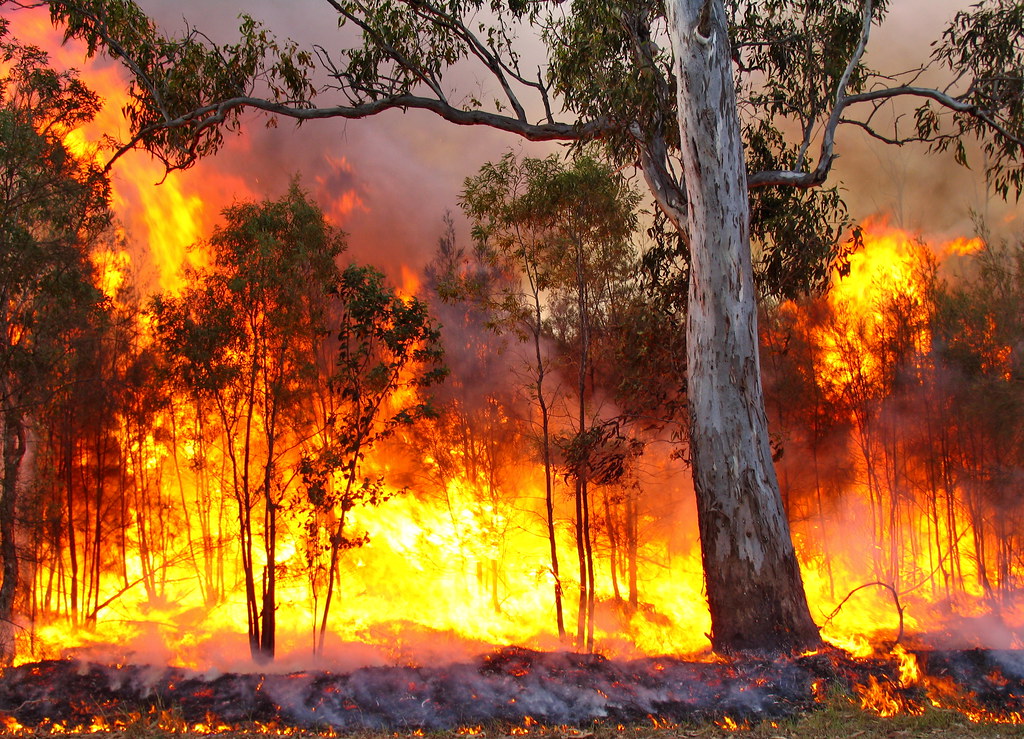|
By Elaine Zhu
Australia has been in the global spotlight after bushfires ravaged millions of acres of land since early 2020, and the situation only seems to be getting worse. Long periods of severe drought and temperatures up to 105.6 degrees Fahrenheit have exacerbated the bushfires. Not only have more than eleven million acres of forest and parks been damaged, but the fires have also killed at least thirty-three people and almost five hundred million animals, causing exorbitant amounts of damage to Australian ecosystems. Wildfires are not an uncommon occurrence in Australia. They usually occur every autumn, burning millions of acres every year. In fact, some species of Australian native plants rely on these fires to regenerate and Australians often use these types of fires for land management and agriculture. Bushfires typically start because of a variety of factors, including the presence of forests, greenery, shrubs, and oxygen, but the speed and intensity of the fire can be influenced by other factors. These factors can include temperature, soil condition, moisture levels, and wind speed. However, the Australian bushfires are on a completely different level compared to previous isolated wildfire events. The Australian bushfires have burned almost eight times more land than the 2018 fires in California—the worst in California’s history. So what exactly is causing these increasingly dangerous wildfires? To many, the Australian fires are a clear indication of the relationship between climate change and worsening extreme weather patterns. Research from the 2017 Climate Science Special Report has shown that decreases in soil moisture content from higher temperatures have been traced back to human actions and influences and will only make the risk of fires worse. Stepfan Rahmstorf, the main author on the United Nations’ Intergovernmental Panel on Climate Change’s Fourth Assessment Report, states that “due to enhanced evaporation in warmer temperatures, the vegetation and the soils dry out more quickly, so even if the rainfall didn’t change, just the warming in itself would already cause a drying of vegetation and therefore increased fire risk.” As the climate becomes warmer and creates drier conditions, it is much easier for fires to start; these dry conditions only help the fire spread to other areas. This drying trend also affects the amount of rainfall that Australia receives. The Climate Council released a press briefing explaining that the regions of Tenterfield and Stanthorpe in Australia had 77 percent less rainfall than the usual annual average. Overall, the southeastern regions of Australia have had a 15 percent decline in the rainfall during the autumn months and a 25 percent decline in the rainfall in the months of April and May. Rainfall is especially important during the bushfire seasons, as lower levels of rainfall will lengthen the duration of the bushfires. These bushfires haven’t just caused detrimental effects to the people and animals of Australia, but have also had lasting effects that will contribute to the global climate change problem—one of the factors that exacerbated the Australian bushfires in the first place—and thus create a positive feedback loop. Mark Parrington, senior scientist for the European Centre for Medium-Range Weather Forecasts, states that from September to January 2019, “the wildfires released around 400 million tons of CO2, which is roughly the same amount the the United Kingdom emits in an entire year.” The acceleration of carbon dioxide in the atmosphere will only exacerbate climate change and its global effects, including the melting rate of glaciers. The soot from the fires can latch onto the glaciers, creating an almost brown caramel color on the surface. This change in color decreases the reflectivity of the ice, which makes the glaciers melt even faster, increasing the ocean temperature and decreasing the amount of sunlight reflected back into the atmosphere. With the detrimental effects that the bushfires have had on Australia, it wouldn’t be too far of a leap to assume that Australian leadership might take action to reduce climate change and prevent more bushfires from happening. However, the Australian Prime Minister, Scott Morrison, has had a history of opposing action to reduce carbon emissions and has downplayed the effects of climate change on the intensity of the Australian bushfires. In the past, he has spoken out against taxing carbon emissions and has promoted and protected coal mining. The Australian bushfires are just one of the consequences of anthropogenic effects on climate change and the environment. In order to decrease the severity of bushfires and the rise of global climate change, we must recognize the harmful effects that climate change has caused and will continue causing to future generations. We must take action to reduce carbon emissions worldwide.
0 Comments
Leave a Reply. |
Categories
All
Archives
April 2024
|

